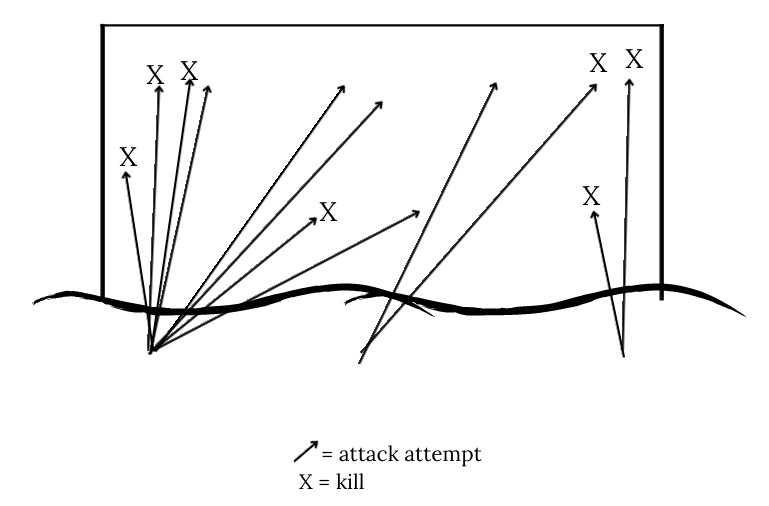Download 7 Free Volleyball Stats Templates
Start using our simplified statistics tracking sheets, each with a purpose toward improving an aspect of your team’s performance.

Another classic volleyball stat – each player’s serve receive pass is rated as a 0, 1, 2, or 3.
Passing percentage is the sum of their passes score divided by number of passes.
(amount of 3 Passes x 3) + (amount of 2 Passes x2) + (amount of 1 Passes) / Total Passes
What to Look For: Find your best serve receivers and make sure they are passing the ball most often.
Example:

Track how long it takes to get out of each serve receive rotation.
Volleyball is a serve and serve receive game. Siding out as soon as possible is critical to winning.
How to Use Results:
Example:

Track each players’ made serves, aces, and errors.
Very useful for young teams, where serving is an important winning factor.
How to Use Results:
Example:

Measure the quality of each serve based on the result of the opponent’s pass.
At higher levels, the focus of the serve is to get opponent out-of-system. Not just about serving in, but about getting a good result.
How to Use Results: Find your best servers and make sure they serve early in the game. They want to be mindful about
Example:

While this tracking isn’t by numbers, it is a great visual. Using this format, you can see:
How to Use Results: Share with your team and attack the areas you are already getting kills in.
Example:

The inverse of the last statistic, visually track:
How to Use Results: Share with your team and adjust to the areas they are getting kills in.
Example:

Start using our simplified statistics tracking sheets, each with a purpose toward improving an aspect of your team’s performance.